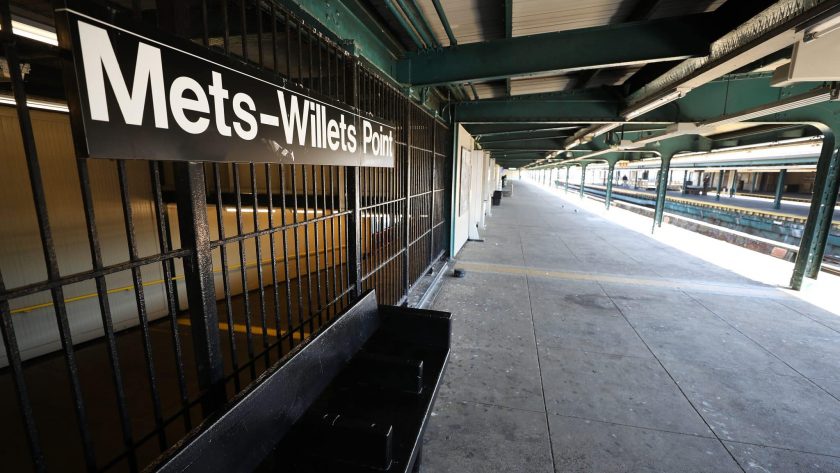MLB crawls towards Opening Day: ‘This might actually be real’

It may not seem like it right now, but baseball might be back fairly soon. The clock is ticking, but that might be the push MLB needs.
Do you ever get that feeling, when something is about to happen, that wow, this might actually be real? This might actually come true? You know the feeling I’m talking about.
Like when the New York Mets were in the World Series in 2015. “Wait a minute,” I thought to myself. “This time next week, the Mets might be World Series champions. That’s a real thing that I’ve never even imagined would actually happen, and it might happen by next week.” It didn’t seem real. It never did become real, of course, but it could have.
I got that feeling in August 2012, the first time I ever saw Matt Harvey pitch in person. The Mets were playing the Rockies, and like most games when anyone worth watching was on the mound, the Mets couldn’t score. Scott Hairston hit a sac fly in the bottom of the first; Ike Davis hit an RBI single to drive in Hairston in the eighth. That was it.
Harvey allowed a run in six innings; after he left, Ramon Ramirez and Frank Francisco allowed two runs each. Going to the bottom of the ninth, the Mets were losing 5-2.
Mike Baxter singled with one out. With two outs, Justin Turner walked. Ronny Cedeño, representing the tying run, came up.
“Ronny Cedeño,” I thought to myself, from my seat in the right-field corner of the field level, “might be about to hit a three-run homer to tie the game, which would easily be one of the best moments of the season, and it might happen right in front of me in a few seconds.”
Suddenly: a deep fly ball, Carlos González going back, deeper, reaching the track, still going…did he do it? Did he actually do it?
Of course, he didn’t. González caught Cedeño’s line drive at the wall, and the Mets lost 5-2. It never became real. But it could have.
MLB Start Date
Which brings us to this week, as MLB owners and MLBPA negotiate to bring baseball back to the field. Will it happen? It’s unclear and seems almost impossible to predict. But at the same time, it’s a strangely familiar situation: within a week or two, unlikely as it may seem, baseball may officially be close to returning.
Any season that’s going to happen will have to start in July (or late June, although at this point, that seems so ambitious that it’s foolish). Even the shortened season of about 50 games that the owners may propose as a last resort would start in July, reports Jeff Passan of ESPN.
Even if the two sides can agree on a start date in July, the players will need time to get back into playing shape. “Spring training 2.0” probably can’t be any shorter than three weeks or so: Assuming no days off, that would mean four turns through a five-man rotation, enough time for pitchers to stretch from prolonged inactivity to game-readiness. And spring training can’t just start immediately: Players will need at least a few days to get to their spring training sites, wherever those may be.
Taken together, even if the union and the owners reach a deal to return, it will almost certainly be at least three and a half weeks before any regular-season baseball. Let’s call it 25 days, best case: three days for players and coaches to assemble at training sites, 21 days of training, and one day off between the end of spring training and Opening Day.
As for what that 25-day figure means, the math is pretty simple. To open by July 1, the two sides will need to reach a deal by June 5 — this Friday. To open by July 4 in a festive display of Americana, negotiations would need to end by June 8, next Monday. Even a July 15 opening, later than the two sides seem to want, would necessitate a deal by Friday, June 19, a little bit more than two weeks from today.
Of course, there are also negatives to the immediate necessity of a deal. Namely, if the players and the owners can’t reach an agreement within the next week or so, and within the next few weeks — if they’re willing to stretch things to the absolute maximum — they’ll run out of time to stage any kind of baseball season at all. That’s a completely realistic possibility.
But no one wants that. Even the owners seem willing to finance a season, albeit a dramatically shortened one, as a last resort. So here we are. As abstract and uncertain as it seems right now, if there’s going to be a baseball season, we will know within the next few weeks, and maybe even within the next seven days. Baseball might really come back. It can actually happen. This time, Ronny Cedeño can hit that ball over the fence.
I have followed New York sports passionately for almost my entire life, since I went to Shea Stadium in 2004 and saw Jae Seo lose 8-1 to the Pirates. At journalism school, I once missed covering a Land Use Committee meeting to write about Jacob deGrom's last start of the year.






